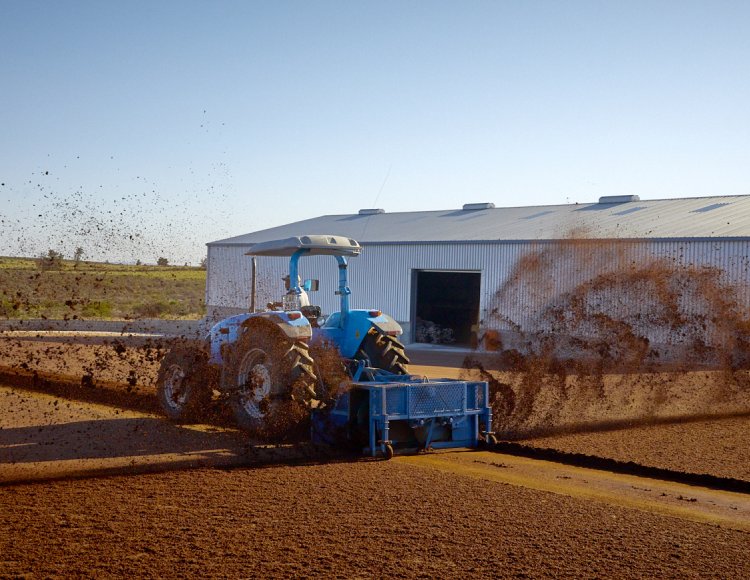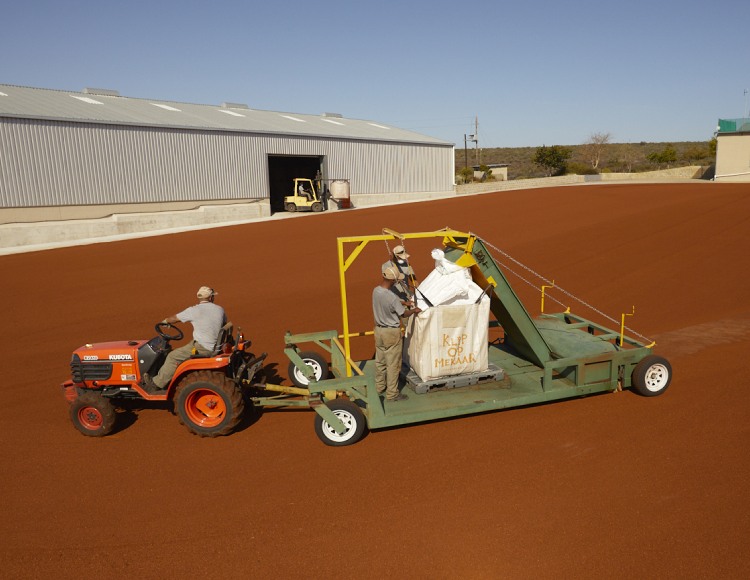Rooibos Farming & Production Process
Situated high in the pristine heart of the northern Cederberg mountains, Klipopmekaar is one of the largest organic rooibos farms in the world

Local Farming Conditions
The Western Cape’s Cederberg region is incredibly biodiverse and is home to a vast number of indigenous fynbos species.
It is only here that rooibos (Aspalathus linearis) grows in its natural endemic state. The Cederberg region provides the perfect environment for rooibos cultivation, featuring a Mediterranean climate (with a winter rainfall between 200 mm and 400 mm per year), lots of sunshine, deep coarse acidic sandy soils, and temperatures that can range from zero degrees centigrade in winter months up to forty-five degrees centigrade in summer.
Rooibos is a very hardy crop, and the rooibos plant is often subjected to drought conditions. Superior quality rooibos generally comes from the higher altitude areas such as Klipopmekaar. Cultivation practices vary: our typical rooibos field is harvested annually for about 4-5 years; after which rotation crops are planted for 1-2 years to provide fields with a rest/recovery period where nutrients are returned to the land.
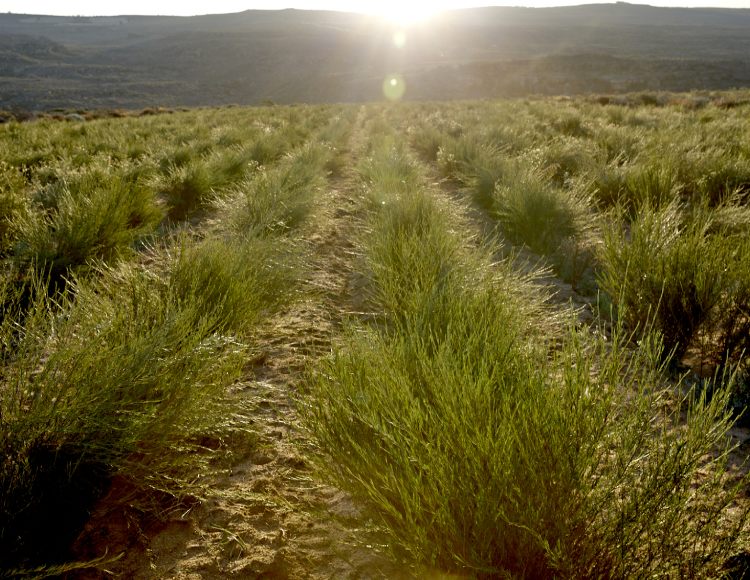



Nursery, Seedlings & Planting
Rooibos is grown from seed hand-collected from Klipopmekaar’s healthy mature rooibos fields.
In late January each year, the seed is organically germinated and planted in our nursery. Following four months of attentive nurturing, and as winter rains get underway and the temperatures drop, a few million small organic seedlings are transplanted each year into our fields using planting machines, and by hand.



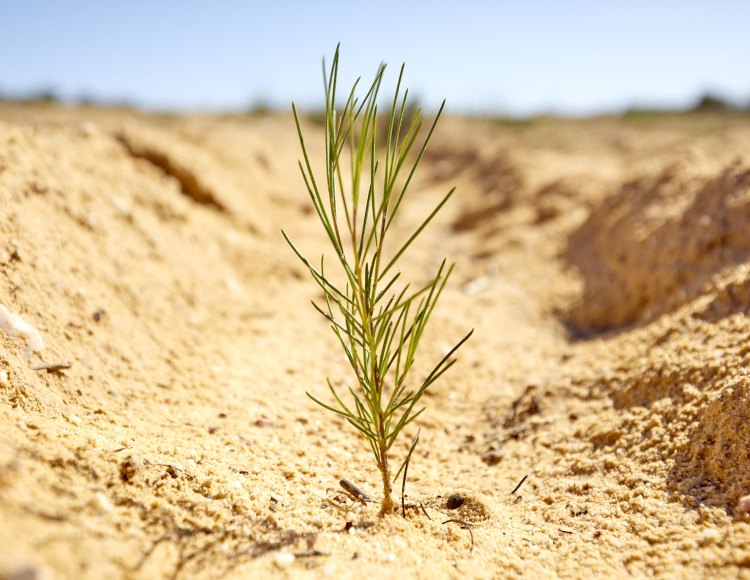
Rooibos Field Preparation
At Klipopmekaar we practice regenerative agriculture and a no-till approach, which means the soil structure and micro-organic biodiversity of our fields is carefully preserved for long-term soil health.
Fields are generally prepared for planting in Autumn. When preparing our fields for cultivation, they are ripped with advanced custom-developed tine implements which don’t overturn the soil, but rather create deep non-invasive furrows in which rooibos seedlings can take root. Field nutrient levels are monitored and organically-certified fertilizers or nutrients are added when needed.

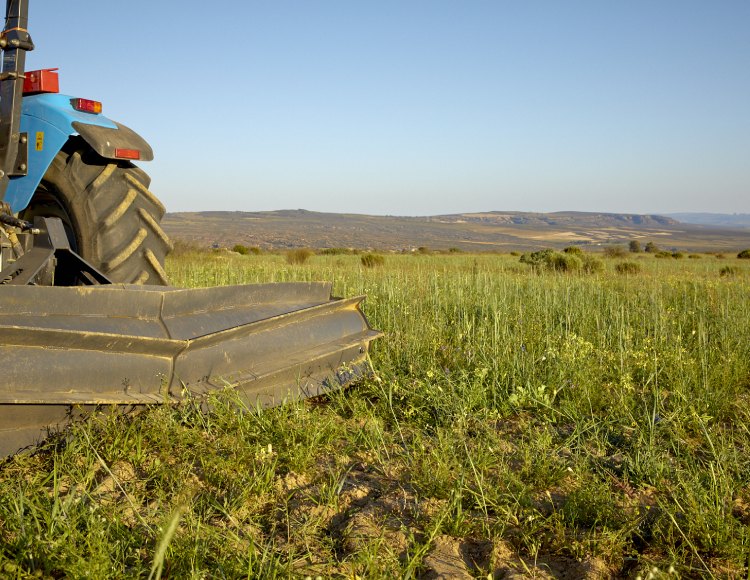



Rooibos Harvesting
The rooibos crop is harvested by annually by hand during summer (December to February).
The bushy plant’s branches are cut using sickles and neatly bound into 10-15 kg bundles (called “gerwe” in Afrikaans). After this, the bundles are transported to our cutting/processing facilities and tea-drying court.



Cutting the Rooibos
Upon arrival at our on-farm processing facility, the bundles are sorted and carefully fed into our purpose-built state-of-the-art cutting machines.
The cutting (also known as “carving”) machines maintain a uniform cut length to ensure a neat and consistent appearance of the final product. Programmed variable speed drives (VSD’s) are used to alter feeding rates, thus enabling the production of various uniform cut lengths, from Short/Teabag cuts to Long/Loose-Leaf cuts, depending upon our clients’ requirements.
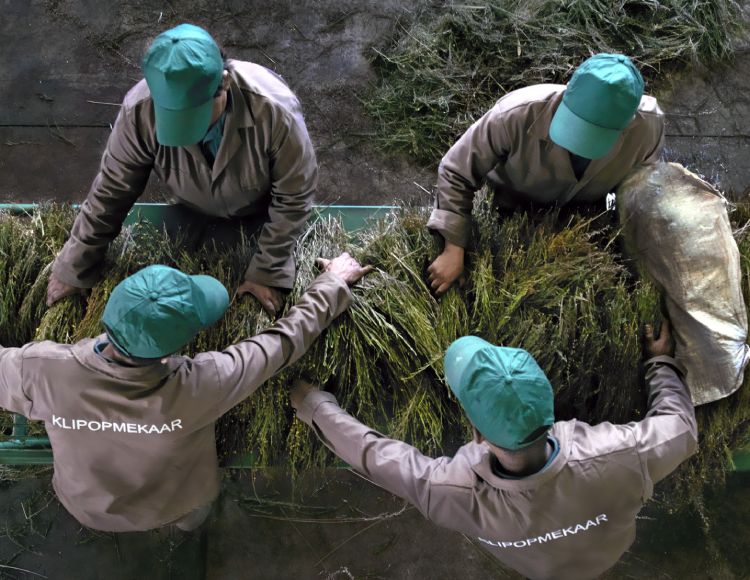

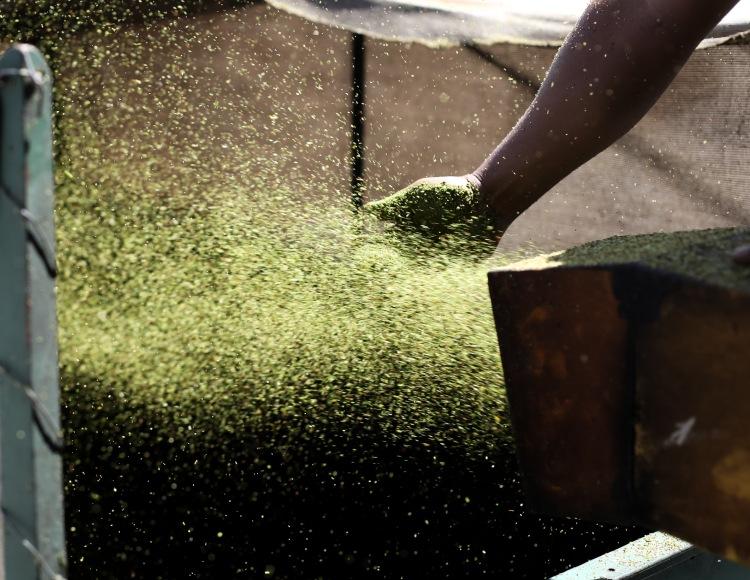

Rooibos Fermentation
The wet freshly-cut green rooibos is then placed in a long low heap across the centre of our tea court to “sweat” overnight.
Through a carefully managed process (including bruising, airing and watering), enzymatic oxidation takes place during fermentation. This causes the rooibos to “magically” change from green to its characteristic red/amber colour, and the wonderful flavour and sweet distinctive aroma of top-quality rooibos to be unleashed.




Rooibos Drying & Storage
After the sweating process, the fermented rooibos is spread out across our tea court to dry 100% naturally in the hot African sun.
Cutting, fermenting and drying processes are completed in less than 24 hours, and the freshly made rooibos tea is “picked/sucked up” by a special machine (called an “opteller” in Afrikaans) and fed into our 400kg bulk bags.
The rooibos is then sampled, tested, graded and labelled for quality assurance and traceability. Next the bulk bags are allocated to our dedicated rooibos tea store where they can be safely stored for up to 10 years. Upon receiving bulk rooibos orders from customers, the processing & packing phase begins.
